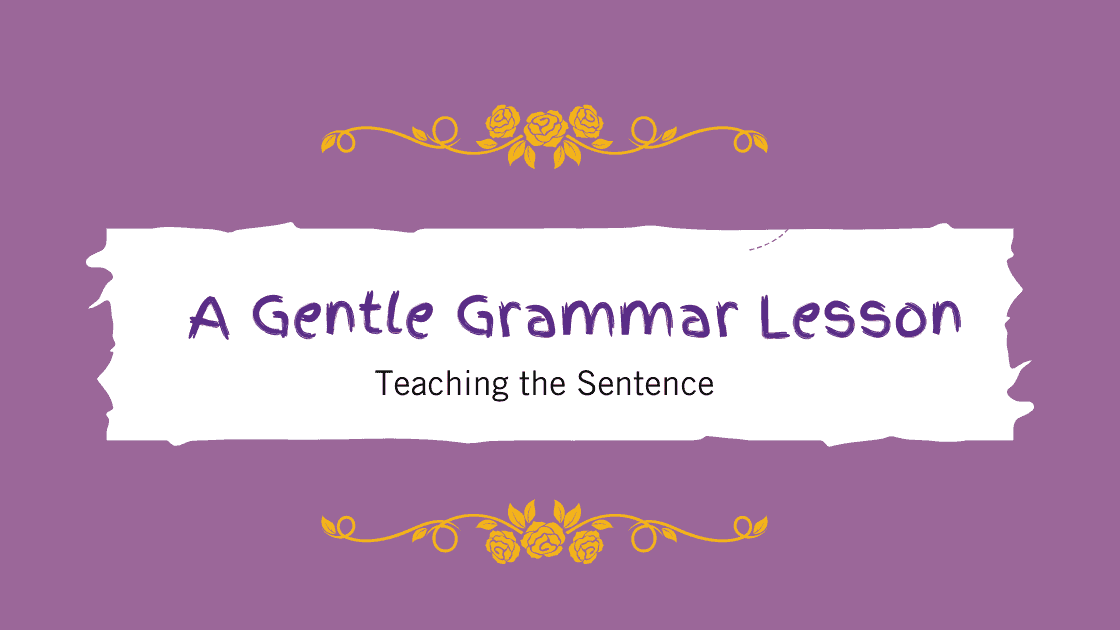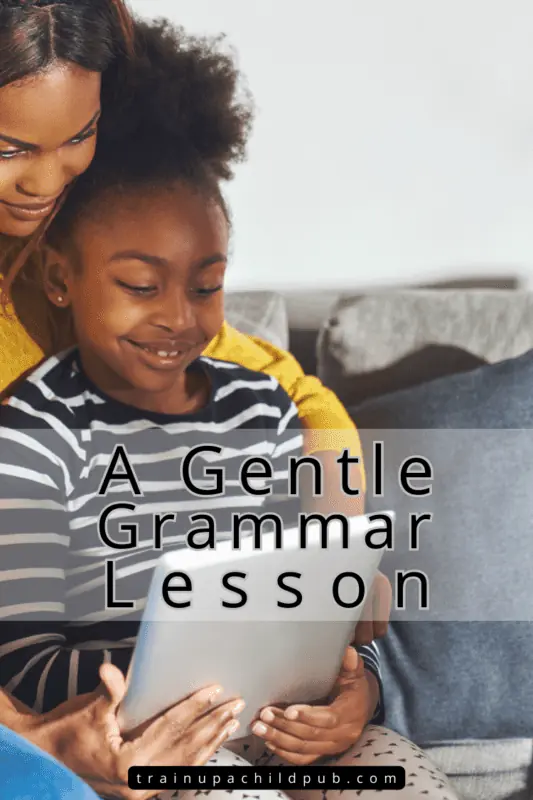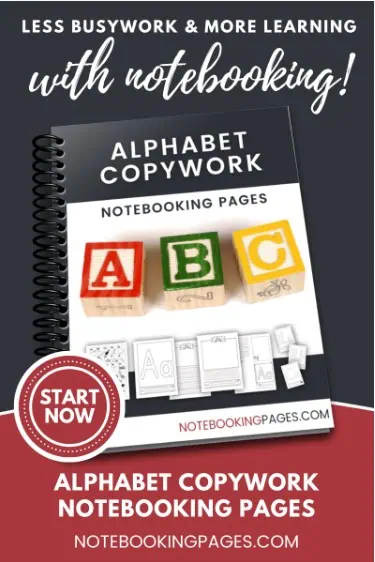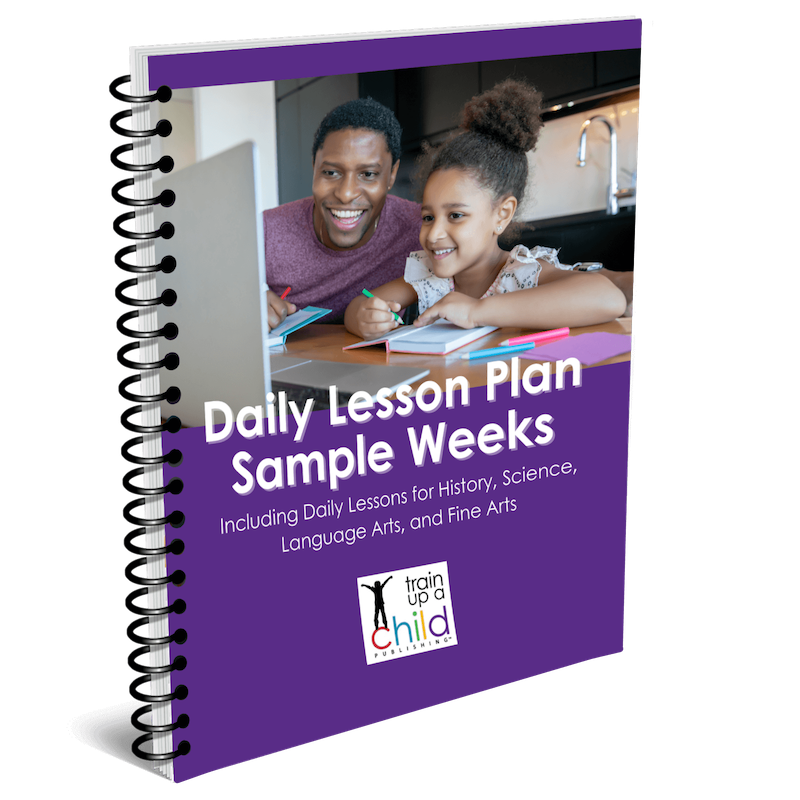A Gentle Grammar Lesson

In the first place, grammar, being a study of words and not of things, is by no means attractive to the child, nor should he be hurried into it.
–Charlotte Mason on a “gentle” grammar approach
Charlotte Mason didn’t believe you should teach grammar to children under ten. She also felt that children were ready at that age to begin only short, gentle grammar lessons.
As your child’s parent, you are in the best position to evaluate whether your student is ready for gentle grammar before ten or whether ten is the right age.
One of mine was crying to learn everything there was to know about writing early, and one wasn’t in a hurry at all, even when it ‘was time.’
Either way, in the beginning, simple oral lessons of about 10-15 minutes are enough to get started.
Note: This post includes a few affiliate links to something we’ve used and loved. Should you buy something from an affiliate link, we could make a small commission on your purchase at no extra cost to you. But you’ll have our undying thanks!
So how do I teach a gentle grammar lesson?
Easily!
Charlotte Mason felt that rather than memorizing the parts of speech, grammar studies should begin with the ‘whole concept’ of a sentence.
Understanding the ‘whole’ first makes it easier to understand the ‘parts.’
Here’s a short reprint of a first grammar lesson from Volume 1 of Charlotte Mason’s Original Home Schooling Series, so you can see just how easy it is to use this teaching method:
Words put together so as to make sense form what is called a sentence.
‘Barley oats chair really good and cherry’ is not a sentence, because it makes no(n)sense.
‘Tom has said his lesson’ is a sentence.
It is a sentence because it tells us something about Tom.
Every sentence speaks of someone or of something, and tells us something about that of which it speaks.
So a sentence has two parts:
(1) The thing we speak of;
(2) What we say about it.In our sentence we speak of ‘Tom.’
We say about him that he ‘has learned his lesson.’
The thing we speak of is often called the SUBJECT, which just means that which we talk about.
People sometimes say ‘the subject of conversation was so and so,’ which is another way of saying ‘the thing we were speaking about was so and so.’
To be learnt––
Words put together so as to make sense form a sentence.
A sentence has two parts: that which we speak of, and what we say about it.That which we speak of is the SUBJECT.
Lesson I Exercises
1. Put the first part to these examples:
—has a long mane.
—is broken.
—cannot do his math.
—played for an hour;
etc., etc.2. Put the second part to—
That poor boy—.
My brother Tyler—.
The broken flowerpot—.
Bread and jelly—.
Mr. Brown’s tool-box—.
Note: this post contains one or more affiliate links to homeschool tools we’ve used that we love. Should you buy anything using one of our affiliate links, we could make a small commission at no extra cost to you. Thank you for supporting us in this way!
Continuing the lesson
Following these exercises, Ms. Mason suggests that your student create new sentences by again replacing the missing parts.
Then she reminds us to remember to call the first part of the sentence – what the sentence is about – the SUBJECT.
After the student has finished creating all of his sentences, he is to go back and draw a line under the part of the sentence that is the subject.
It seems too easy, doesn’t it?
But this method of learning is amazingly effective, especially when you review a new grammar skill for a few days in a row.
Reinforcing the grammar lesson with copywork
Once children heard the lesson, the teacher used short passages of copywork to reinforce the teaching. The perfect copywork for this lesson would be the “To be Learnt” section above:
Words put together so as to make sense form a sentence.
A sentence has two parts: that which we speak of, and what we say about it.That which we speak of is the SUBJECT.
Making your own perfect pages for copywork examples
If you have a new writer or a child just learning cursive, it’s helpful to prepare copywork by making a copy in the style you want your child to use. I recommend using Notebooking Pages to make all of your copywork pages for younger students.
This program allows you to give your children perfect examples to follow in either print or cursive. You can also choose the size and type of line you want to use.
If you’re going to be homeschooling for a while, getting a lifetime membership gives you hundreds of already-made notebooking pages, as well as the opportunity to quickly make copywork examples for your children. But I would try them out first by getting their free large pack of sample pages.
How to continue the gentle grammar lesson
Each child keeps a list of grammar rules in his notebook. Each time he learns a new grammar rule, he records it as copywork and adds it to the notebook.
Not surprisingly, Ms. Mason advocated that the teacher should choose copywork from the Bible as well as other living books.
In our Daily Lesson Plans, we choose copywork for you from your children’s history and science books as well as from the Bible.
Choosing your children’s copywork from their history, science, and Bible reading allows the copywork to serve multiple functions.
If you’ve read my blog for a while, you know that one of my goals is to help you bring your homeschooling to life while helping you have a happy, thriving home. So think of the time you’re saving here using your copywork for so many purposes!
Anytime you can get all these benefits from one activity, it’s a very good thing!
Back to our grammar lesson…
So for the next day’s practice on this grammar concept, use a history or science book to generate some sentence parts, and let your student copy and add the subjects and predicates, as she did before.
Continue to have her underline that part of the sentence that says what the sentence is about, and reinforce what that part of the sentence is called — the subject.
So what do you do to teach grammar? How is it working? (The true test of how it’s working is if you are seeing their grammar and punctuation lessons reflected in their actual writing!)
If this Charlotte Mason-style gentle grammar lesson appeals to you, please give it a try! And here’s a week of grammar lessons using this method.
Enjoy!






Thanks for sharing this…it is encouraging! 🙂
So glad to hear this way of teaching grammar is encouraging to you, Rachel. Sometimes the simplest way of presenting something is the best!